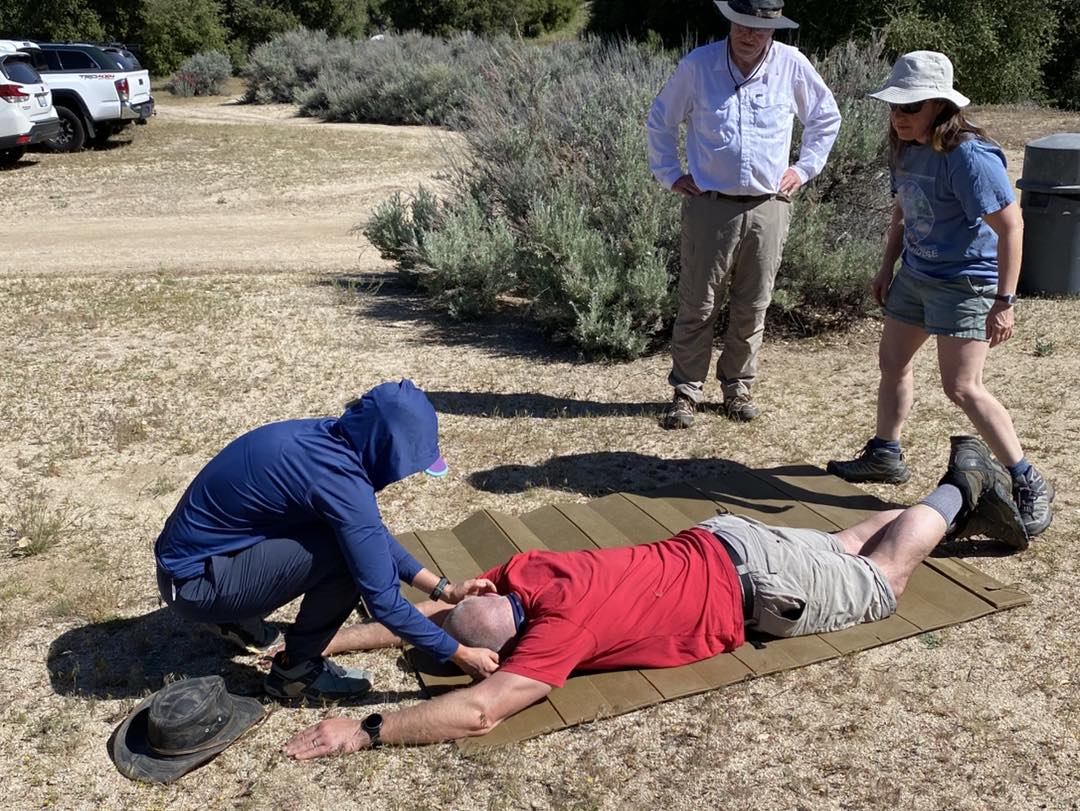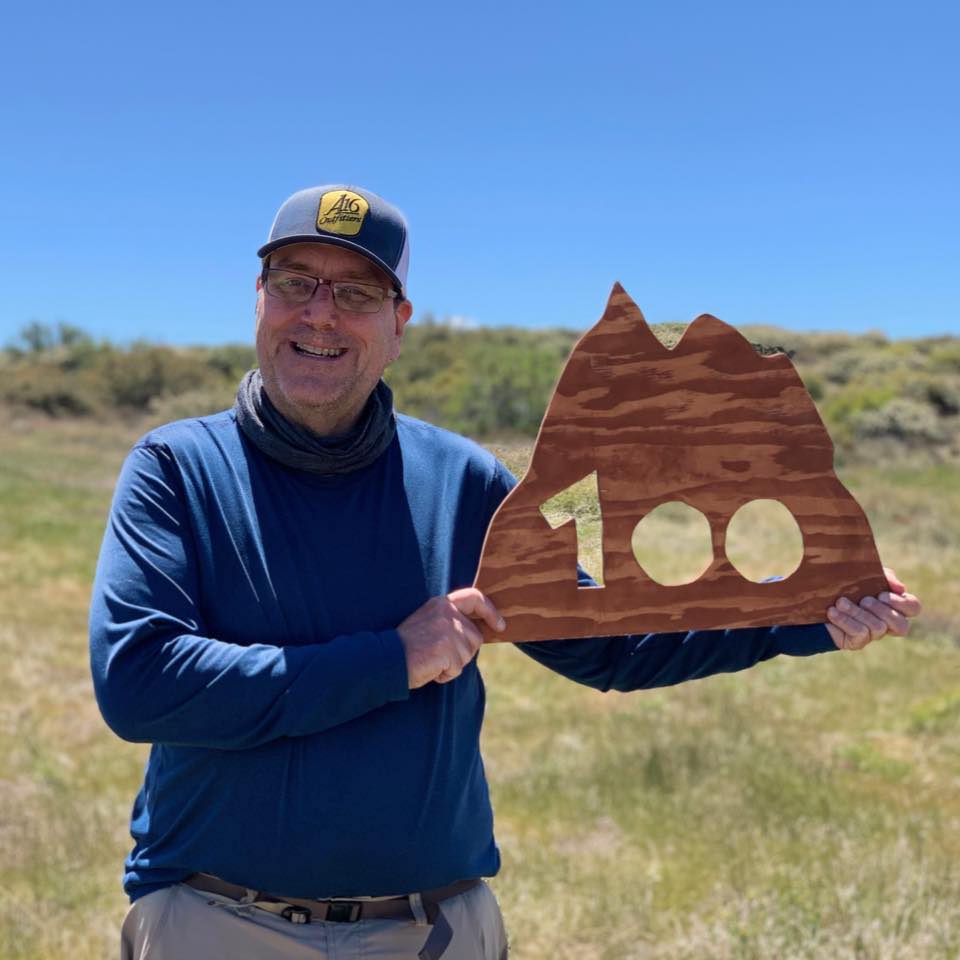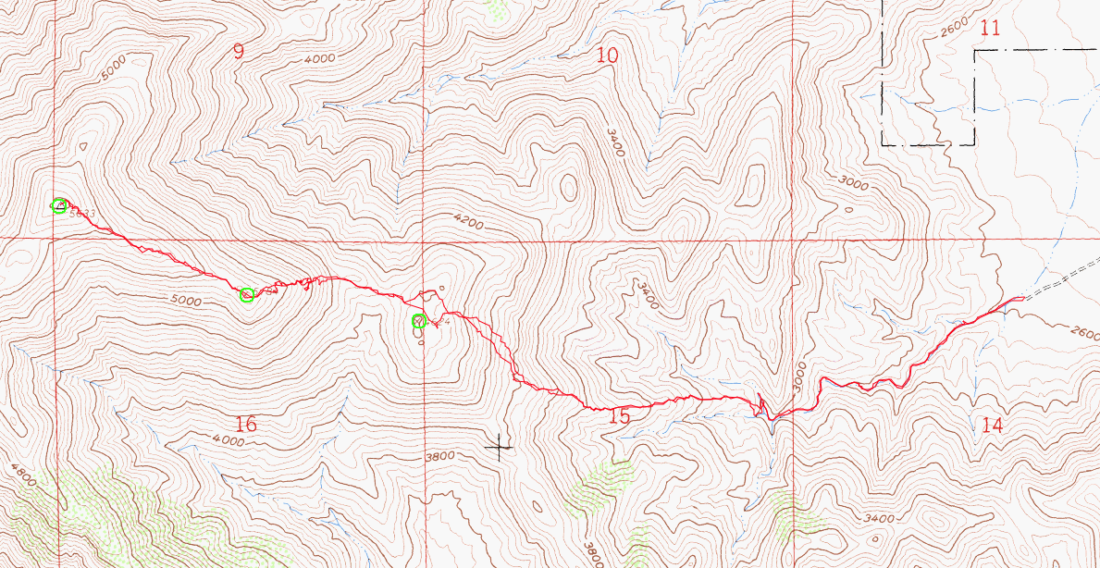Recently, I had a chance to chat with Doc from Hiker Trash Radio. We talked about my peak bagging adventures, the new book, and even my former passion for sea kayaking. You can listen to the two-part episode wherever you get your podcasts from!
Category: Other
Taking a Wilderness First Aid Course
After all those miles of hiking and backpacking, I felt it was finally time to improve my first aid skills. I did have the Sierra Club Wilderness Basics book loaded on the Kindle App on my phone as a reference, but some practical knowledge is always the best. I can’t always hike with a doctor… So, I signed up for a 16-hour wilderness first aid course through my friends at Kit Fox Outfitters. The course was being held out at the Broken Oak Ranch, near Warner Springs, over Mother’s Day weekend. Class began at 8 with the usual filling out of forms before Colin began teaching. The class was a mix of Boy Scout troop leaders who would be guiding their packs along various trips, a filmmaker setting off on his motorcycle down to Patagonia, and a mishmash of other outdoor adventurers.
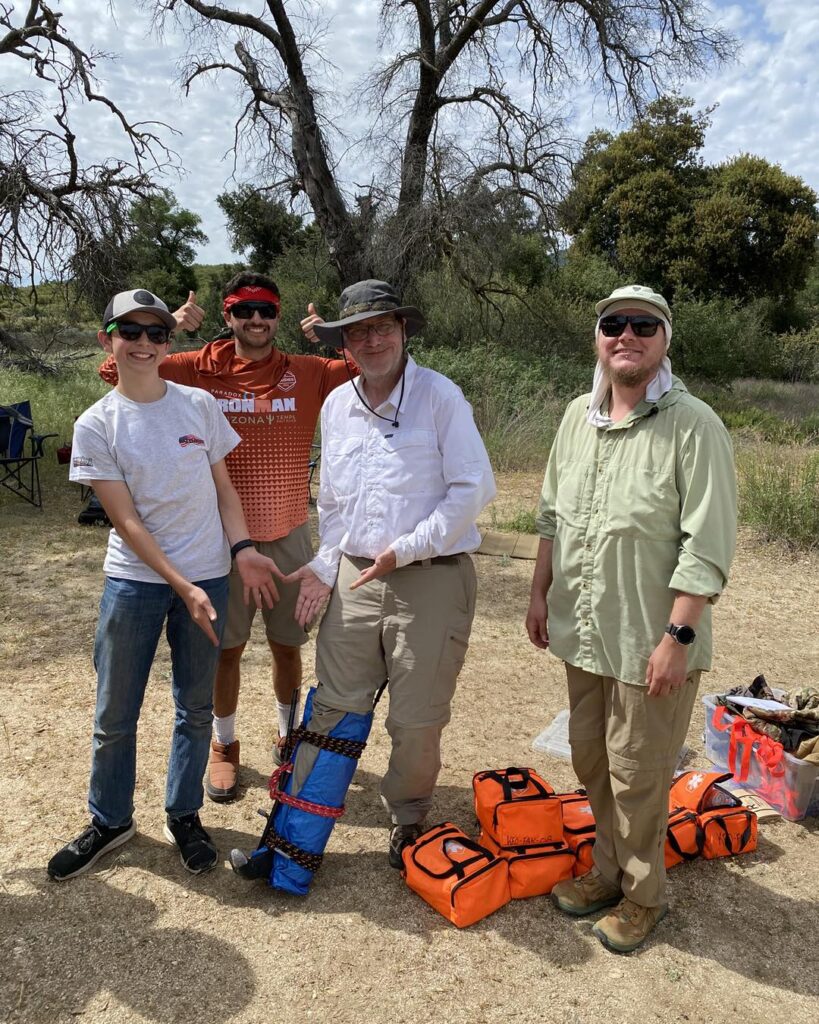
Unfortunately, an early-season heat wave had descended upon us, so we all sought out shade under the oaks while we listened to a fire hose of information being given by Colin. From time to time, we would leave our camp chairs and work through some real-life scenarios along the sandy washes, trails, and hilltops of the ranch. After a solid 8 hours of class, the first day came to a close.
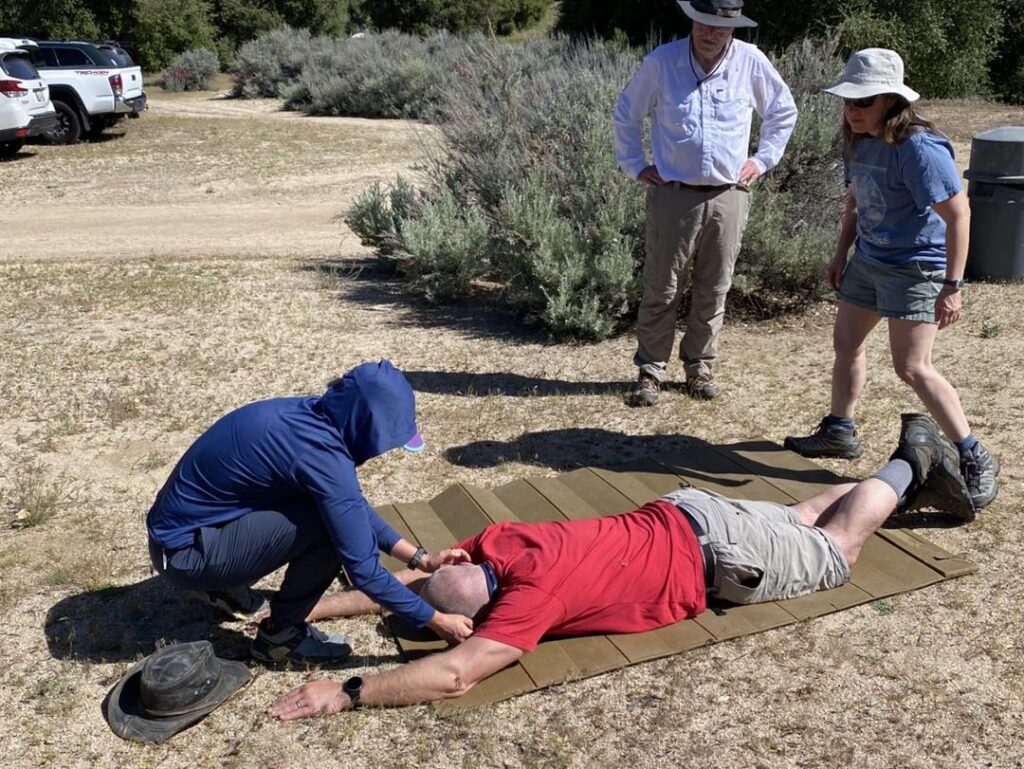
Originally, I had planned to car camp out at the Broken Oak, but the thought of dealing with the heat was not appealing. So, I drove on home to a hot meal, a soft bed, and air-conditioning. The next morning, I made the oh-so-familiar drive back to Warner Springs for the second day of class. We were joined by David, another instructor, to continue diving into how to manage first aid in wilderness situations. On the first day, we had done our CPR training, and today we had our EpiPen training (like I needed that, given my son has one). We had a few more hands-on scenarios making splints, make-shift litters, and dealing with a multi-person incident. After our final “test”, our course was complete and we had all passed. We said our goodbyes, ready to venture into the wilderness with a bit more confidence.

I am an avid peak bagger, sometimes backpacker, and former sea kayaker living in San Diego. I am the co-author of Urban Trails: San Diego, coming in Spring 2026!
In 2019, I became the third person to complete the San Diego 100 Peak Challenge. Not stopping with that accomplishment, I set my sights on the harder San Diego Sierra Club 100 Peak list, which I completed in 2021. In addition, I have conquered several Six-Pack of Peaks challenges (SoCal, San Diego, Central Coast, and both the Arizona-Winter and Arizona-Summer). I am looking forward to exploring new summits and new adventures across the southwest.
Exploring the Santa Rosa Plateau
I decided to explore a bit more of the Santa Rosa Plateau and hike out to see the vernal pool and the Rancho Santa Rosa Historic Area. There was only one car in the parking lot when I pulled in. I paid my $6 use fee and set off along the trail. The grasses were still green, and clumps of poppies could be seen scattered about. The flowers were still closed, awaiting the morning light to open them up. Hopefully, on my return, I can get a good photo or two.







The large vernal pool was about 0.6 miles due east of the trailhead. A boardwalk allows you to walk closer to the actual vernal pool. In the distance, I spotted two herons. I left the vernal pool and headed down to the Moreno and Machado Adobes, the two oldest standing structures in Riverside County. The trails are very well maintained, with each junction well-signed, and from time to time, benches were placed so you could sit and enjoy the view.






Once there, I strolled around the grounds and looked at the outside of the buildings for a bit. I had an 11 am meeting I needed to attend back in San Diego, so I headed back to the car. Instead of taking the Vernal Pool Trail back, I opted to take the Transpreserve Trail back to the car. Along the way, I spotted a balloon off in the grass, so I carefully left the trail and picked it up.









Soon, I could see the trailhead, and as I had hoped, the poppies had started to open up. I snapped a few photos and headed home. The entire hike was 3.65 miles and had 339 feet of elevation. There are some more trails around the preserve that I’ll try to explore soon.
I am an avid peak bagger, sometimes backpacker, and former sea kayaker living in San Diego. I am the co-author of Urban Trails: San Diego, coming in Spring 2026!
In 2019, I became the third person to complete the San Diego 100 Peak Challenge. Not stopping with that accomplishment, I set my sights on the harder San Diego Sierra Club 100 Peak list, which I completed in 2021. In addition, I have conquered several Six-Pack of Peaks challenges (SoCal, San Diego, Central Coast, and both the Arizona-Winter and Arizona-Summer). I am looking forward to exploring new summits and new adventures across the southwest.
Hello, Mount Hollywood
Besides my love of hiking, I also have a passion for space, particularly crewed capsules. In fact, I also run American-spacecraft.org, which catalogs the locations of the various spacecraft. Recently, the three capsules on display at the California Science Center in Los Angeles were temporarily moved to a new gallery and shown without their usual protective enclosures. I wanted to drive up and photograph them for the site.

Since I was in the LA area, I also decided to do a hike. I opted to hike up Mount Hollywood in Griffith Park, which was not too far away from the museum. I arrived near the Trails Café and found parking along the street. I gathered my waist pack and poles and set off up the East Observatory Trail. This moderately steep trail works its way up toward, as you might guess, the Griffith Observatory. (FYI, no relation to that Griffith).





From there, I walked across the parking area to the Charlie Turner Trailhead to begin the second portion of the climb. I could see the summit from the parking lot. Tourists milled about, snapping photos with the Hollywood sign behind them, or next to the memorial for James Dean. Carefully crossing the road, I took the trail to start the second portion of this climb. Following the wide trail, it worked its way around the mountain with a gentler grade than the first section. Along the way, I quickly stopped at the Tiffany & Co. Foundation Overlook for a nice view of that famous sign. From there, I continued upward, passing Captain’s Roost, one of three folk gardens in Griffith Park, before reaching the actual summit (aka the Tom LaBonge Panorama). I snapped a few photos, but the west side of LA was still pretty fogged in, and the rest of LA had a bit of haze as well. I need to come up here on a good Santa Ana day.












I retraced my route down to the Observatory. I wanted to pop in and see if a friend was working, but they are closed on Monday. Instead of taking the East Observatory trail back to the car, I opted to take the West Observatory trail instead. Both rejoin right where I parked, so it was not an issue. I stopped off at the Trails Café and enjoyed a cold iced tea and part of a delicious chocolate chip cookie. With another peak crossed off the Lower Peaks Committee list, I changed my shirt and shoes and made the 30-minute drive to the museum to see those capsules. The actual hike was 5.31 miles with 1087 feet of gain that I covered in 1:45. There is one more LPC peak in Griffith Park, so I will be back soon.
I am an avid peak bagger, sometimes backpacker, and former sea kayaker living in San Diego. I am the co-author of Urban Trails: San Diego, coming in Spring 2026!
In 2019, I became the third person to complete the San Diego 100 Peak Challenge. Not stopping with that accomplishment, I set my sights on the harder San Diego Sierra Club 100 Peak list, which I completed in 2021. In addition, I have conquered several Six-Pack of Peaks challenges (SoCal, San Diego, Central Coast, and both the Arizona-Winter and Arizona-Summer). I am looking forward to exploring new summits and new adventures across the southwest.
Almost There Adventure Podcast

I had an awesome time talking with Jeff Hester, Jason Fitzpatrick, and Saveria Tilden on the “Almost There Adventure Podcast” about the 100 Peak Challenge! I, along with Derek Loranger, (creator of the 100 Peak Challenge as well as a good friend) and Susie Kara, my often hiking companion (in addition to being the first finisher), talked about completing it and what that adventure has meant to us (plus other ramblings).
Hope you enjoy listening as much as we enjoyed recording it.
Planning…
Well, since I just finished the 100 Peak Challenge, I thought I would offer some guidance to those who might be looking to attempt it in some fashion. I was able to complete it with a combination of luck and planning. Now, I can’t help you with the luck part but I can go into detail about my planning. Two factors that will have the most impact on how you do this challenge are the weather, specifically for those hikes in Anza-Borrego, and the difficulty of the hike. Remember just because the mileage is low, it does not mean those are easy miles (either of the Sombreros come to mind).
When I knew my first attempt at completing this challenge was not going to happen (due to my final peaks all being in the desert and it becoming too warm to safely hike them), I took a look at the peaks I would need to revisit. I grouped the 100 peaks into three categories: desert, in-town and general. The desert hikes were pretty self-explanatory. In-town hikes were any hike that it took less than 1 hour to get to the trailhead. General hikes were all the rest. Since the desert window had closed until the fall for me, I focused on the general hikes on the weekends, and the in-towns were before or after work, or if a full hiking day wasn’t possible. During the first attempt, I did many of these on the weekends. Now that I knew the trail, the difficulty, and was in better shape, I tried not to ‘burn’ precious weekends on them.
Another thing I was able to do was summiting multiple peaks in one day. While some are natural doubles, Lawson and Gaskill for example, once you know where the trailheads are, along with what the trail is truly like, you can start to combine them. For example, Manza Benchmark and Sheephead Mountain are about 10 minutes apart by car. But with a nice breather in between, these are doable in a single outing. Another thing I did was to have backup peaks ready to go. Routes loaded on my phone, paper maps printed and extra food and water. Sometimes a peak might not be doable, and/or if you are lucky you might be able to squeeze in a second or a substitute.
If you are starting the challenge now, I would focus on peaks out in Anza-Borrego. For some, desert hiking is scary, and often these peaks have no trail and take more skill than hiking up Iron Mountain or any of the more popular peaks. Here is what I would recommend cutting your teeth on:
Borrego Mountain – West Butte: Great trail to the top, easy to drive to (you get some intro to dirt driving).
Ghost Mountain: A good trail to the homestead, then you get to test your navigation skills to the summit.
Mine Benchmark: Once you are ready for some trail-less desert adventures, this short hike is a good one.
Red Hill: The trailhead is right off S-2 and the route is pretty easy to follow.
Once you are more comfortable in the desert you can start in on some of the others, such as:
Sentenac Mountain: A bit of canyoning and dry waterfall before reaching the summit.
Piedras Grandes: A good intro into some of the terrain on other peaks.
Indian Hill: A good intro into working through larger boulders.
However, Anza-Borrego is also home to some of the tougher peaks on this challenge. Know that there are some that will certainly test you…
For the general peaks, the temperature is still a factor. There were several times I turned back from a summit due to the heat (during my first attempt). Knowing this will factor into your planning. There were many days with sunrises at the trailhead. I would recommend trying to get more of the inland and lower foothill peaks in the spring. One thing about many of the trails is the lack of shade, so you will feel the sun. Good examples of peaks that fit into this category are Mt. Gower, Monserate, and Gutaty. Another factor to be aware of is the hunting season. I had to be a bit more aware of my surroundings on some peaks near Julian during the hunting season.
If you are like me, you probably have done the ‘in-town’ hikes more than once. I tried to find ways to do them differently. Sunset hikes or full moon hikes are good examples of this. Plus, you can get some experience using a headlamp, it will be needed for some of the tougher ones. Also, look for alternate routes, remember it is only the summit that matters, not the trail.
Hope this helps some. Please feel to reach out and ask questions. All my routes are on peakbagger.com, so you can use them as a reference.
100 Peaks: A recap…
For much of 2019, I have been wandering in the mountains of San Diego, sometimes alone, and sometimes with good friends. I have journeyed to these peaks in an attempt to summit 100 of them within the calendar year. As I approach the end of this journey, I have to pause and reflect upon it. When I am out hiking toward some distant point on a map, to sign some register or photograph a metal disc cemented onto a rock, there is time to think about life, family and friends. I realize that each step I take is a gift and these adventures are not to be taken for granted. Unfortunately, I am now of a certain age where mortality begins to show its unforgiving face. So, instead, I soak in the beauty of the trail, the vistas from the summits, and the companionship of my friends. All these miles have given me a different sense of purpose and passion. I know that this challenge has served as a remedy for me as well. We lost a bright and unique soul in my good friend Mark Kerbel, z”l.
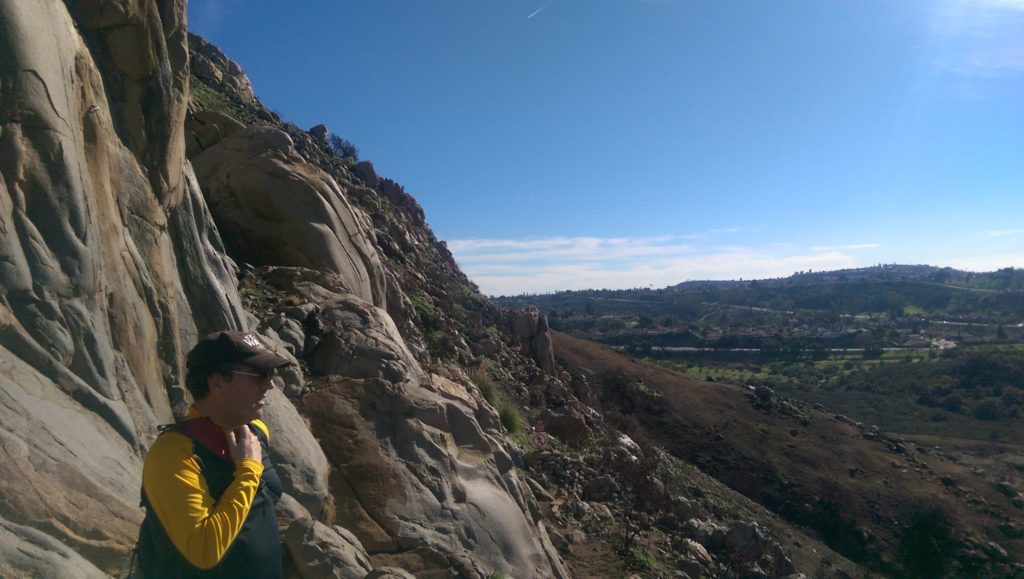
Although I never had the chance to go hiking to one of these peaks with him, I know he would have loved to be there with me. I have dedicated this effort to his memory.
I do have to personally thank some folks along this journey:
My lovely bride Anita for letting me spend all this time hiking…
Ted Markus for tagging along for so many of these adventures…
Susie Kara, the first finisher of this challenge, and sometimes hiking companion, for giving me so much encouragement throughout the year…
Derek Loranger for creating this challenge…
Greg Gerlach for all his information on peakbagger.com and joining me on some of the big ones…
Lastly, all my friends and family who have suffered through me blabbering on and on about this.
Now that this challenge is complete, here are the stats and my answers to the common questions:
Total Miles Hiked: 512.2
Total Elevation Gained: 138,254 feet
Hours Spent Hiking: 313 hours and 18 minutes
These include the A16 3-Peak Challenge summits as well.
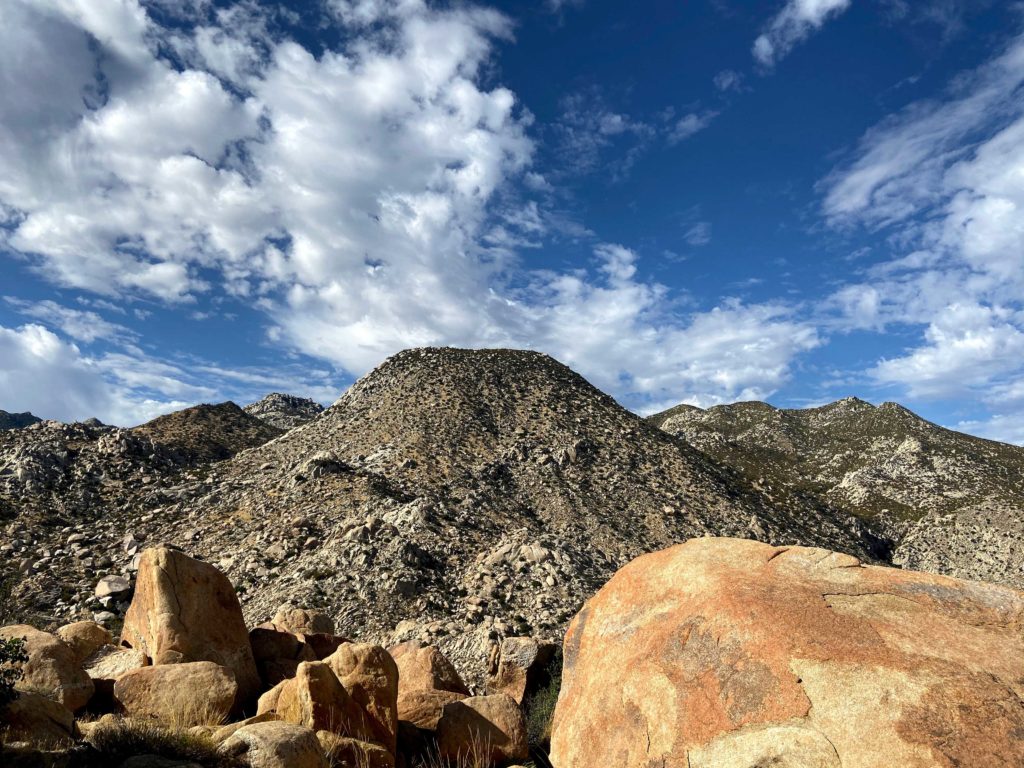
Hardest Hike: Without question Square Top. In our 10+ hours of hiking, we only covered 5.4 miles but gained some 3,300 feet of elevation. There was no trail and some serious bouldering to reach the summit. Ted Markus and Greg Gerlach kept providing encouragement along the entire way. I almost ended my attempt at this challenge on this peak, but I made it to the summit.
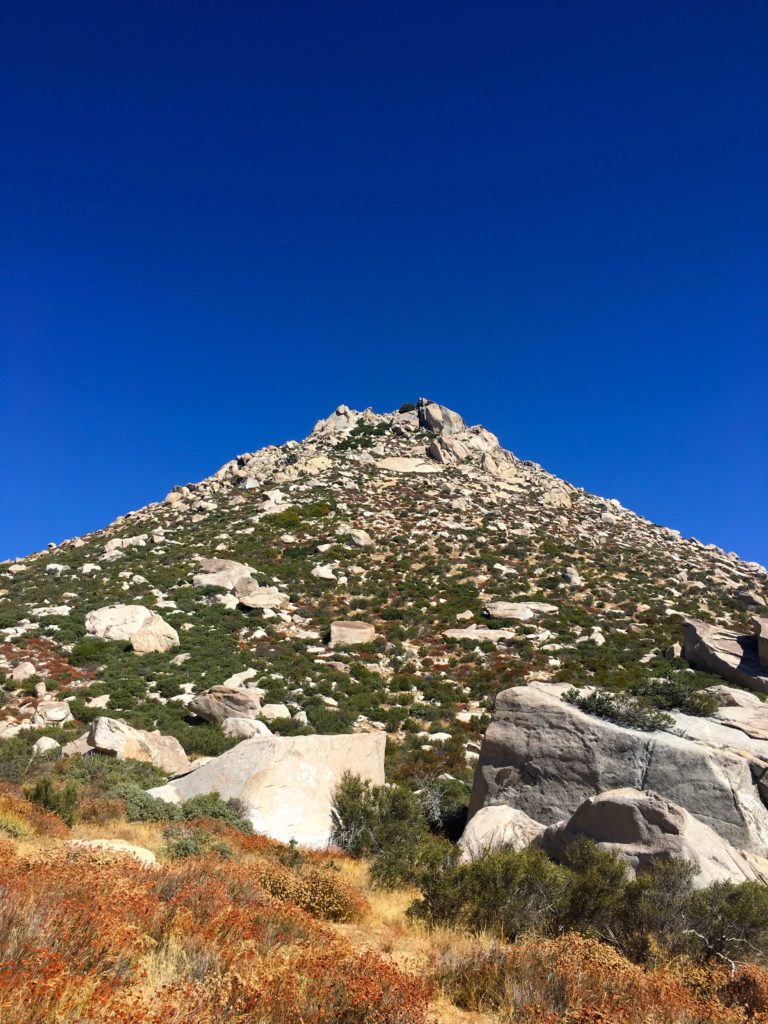
Proudest Hike: The Thimble! It took three separate attempts to reach this summit. On the first attempt, the rocks were covered in ice, so Susie Kara and I decided it was not safe to attempt it. For the second attempt, Gail Welch and I got close, but an impending rainstorm drove us back down the peak. My third attempt was a solo one, and I thought the brush near the top might block me, but I found a route through to the top.
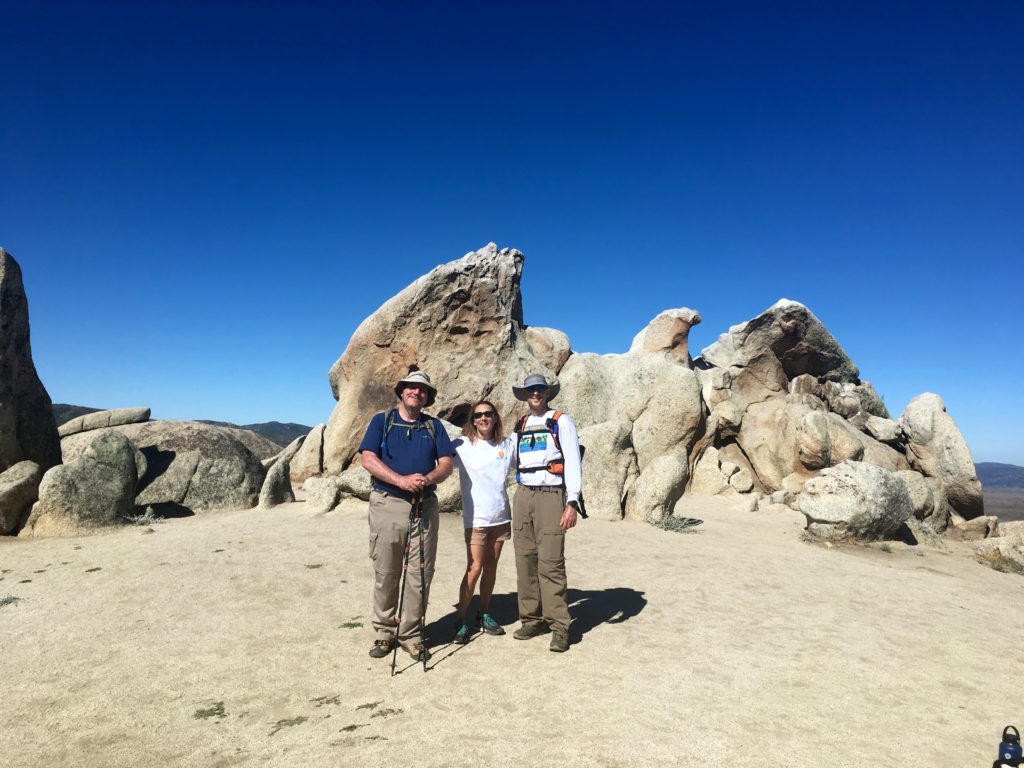
Favorite Hike: Picking a single favorite is almost like picking a favorite child. Each peak was unique and had something memorable about it. I think our July 4th hike to Eagle Rock might be my favorite. Juliet Grossman drove down from Temecula to join Ted Markus and me, and we were able to do this hike as a point to point, rather than the traditional out-and-back from Warner Springs since we had two cars. The section from Montezuma Valley Road to Eagle Rock was one of the most beautiful bits of trail I had been on. A close second was Mile High Mountain. This was a full-day hike, where the four of us started and ended in the dark after covering some 15.8 miles and 6,100 feet of elevation. Unlike Square Top, I had the strength and the will to do it!
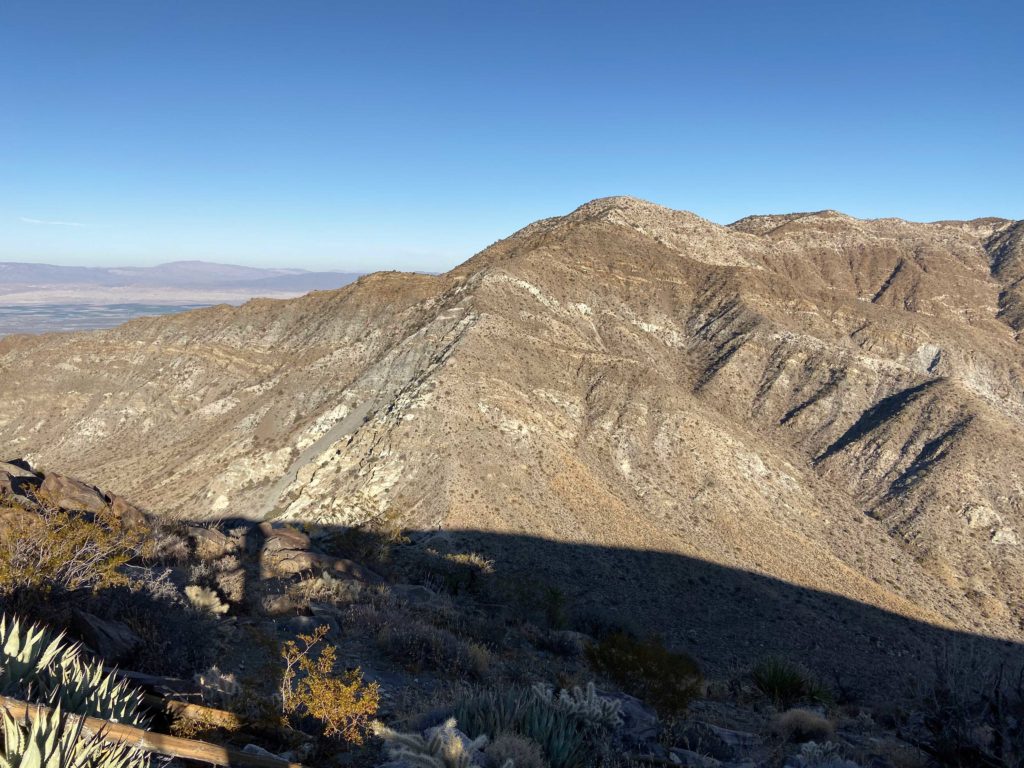
What’s Next?
Well, the peaks are still calling me… I have signed up for the 6 Peak Challenge. In reality, this will be 12 or more peaks. The challenge just expanded into San Diego, so I will revisit 6 of the peaks I did in 2019. I also hope to summit the challenge’s original 6 as well. I did three of them in 2019 as part of the A16 3 Peak Challenge.
The 2019-2020 Coast to Crest Challenge will also be on my plate. This will be my third year doing this one. Each year a new set of trails is selected, and I am looking forward to exploring them.
But wait! There’s more! There is another 100 peak list here in San Diego. This one is maintained by the Sierra Club. I have 28 peaks left on it, so I will start to pick those off. They are all in the desert, so I hope to get a few in during the early part of the year and some toward the end. That list does not have any crazy time limits on it.






